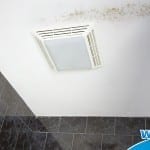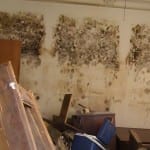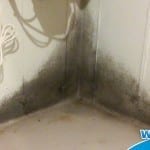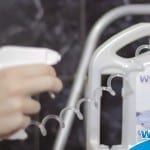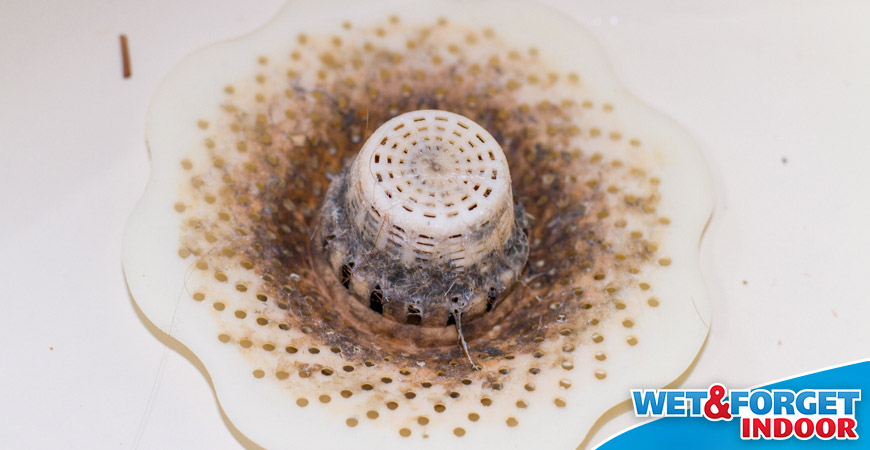
The 10 Top Things You Need to Know About Mold in Your Home
No matter where you live, some amount of mold is in the air in your home. And while it’s impossible to completely get rid of mold, the Centers for Disease Control and Prevention (CDC) report that exposure to too much mold is linked to health problems in previously healthy children and adults.
Mold also looks disgusting, smells musty, and can ruin many surfaces. Read on for the lowdown on mold and its health effects, how to prevent mold growth, and how to get rid of mold with Wet & Forget Indoor Mold+Mildew Disinfectant Cleaner.
The Facts Before You Get Rid Of Mold
1. Mold is a fungus
“Mold” and “mildew” are both words that we use to talk about fungal growth; there is no difference between mold and mildew. There are many different types of mold, and mold can be many different colors, but the most common colors are black, white or gray.
The hallmarks of mold are a fuzzy or slimy appearance and a musty odor. Sometimes that musty odor can alert you to hidden mold growth in your home.
2. Mold likes the damp
All types of mold reproduce by sending spores through the air in search of a good place to grow. Mold can grow on almost any surface, as long as it has plenty of moisture and not too much direct sunlight.
3. Mold can grow almost anywhere
Mold is well-known to invade carpeting and bathrooms, but mold growth can occur on almost any damp surface, including concrete, paper, ceiling tiles, wood, and even glass. During mold growth, the fungus actually starts to digest the material it’s growing on.
If left unchecked, mold can destroy carpeting, walls and flooring, leading to expensive home repairs.
4. Mold health effects
The CDC reports that too much mold exposure has been linked to health problems ranging from worsening asthma symptoms to respiratory infections, and that early mold exposure may even make some children more likely to develop asthma.
How to Prevent Mold Growth
5. Dry water-damaged areas within 24 to 48 hours
If you experience spills or flooding of any kind in your home, the Environmental Protection Agency (EPA) says that it is essential to dry out the flooded materials within 24 to 48 hours to prevent mold from growing. Depending on the situation, you may be able to use a wet-dry vacuum to suck up the worst of the water, hang rugs outside to dry, and use a fan to dry carpeting.
If the flooding is severe, or if it involves electrical appliances or wiring, call in a professional.
6. Keep Humidity Low
Because mold needs plenty of moisture to grow, keeping the humidity low in your home is a good way to minimize mold growth. The EPA recommends keeping your home’s humidity between 30 and 60 percent to prevent mold growth.
According to the CDC, keeping your home’s humidity below 50 percent is also a good way to control dust mites, which can cause health problems for allergy sufferers.
7. Don’t install carpet in damp areas
Carpeting is warm and comfortable under your feet, but it also holds moisture. This can spell disaster in an area where there are frequent spills, water leaks or general moisture, such as kitchens, bathrooms and laundry rooms.
To prevent mold growth in wet areas, stick to hard, waterproof flooring such as tile or linoleum, which you can easily dry off and clean.
8. Add insulation to prevent condensation
Water condensation on areas such as the interior surface of outside walls and the underside of your roof is an invitation for chronic mold growth. Make sure that your home’s walls and attic are well insulated to make the interior surfaces less cold, so that less water condensation occurs.
Make sure your home has good air circulation, and use exhaust fans in your kitchen and bathroom.
How to Get Rid of Mold
9. Get rid of mold with Wet & Forget Indoor Mold+Mildew Disinfectant Cleaner
Lots of household products clean mold cosmetically without actually killing the mold, which leaves behind the musty odor and allows the mold to grow back almost immediately. Corrosive chemicals such as bleach can cause immediate damage to many household surfaces, while repeated use of these chemicals can accelerate the breakdown of many other surfaces.
Bleach also has very strong fumes and, even though it kills mold, its high water content (about 99%) can be a setup for new mold growth.
Wet & Forget Indoor Mold+Mildew Disinfectant Cleaner both kills mold and inhibits mold growth on hard non-porous surfaces, without the strong, irritating fumes you get with chemicals such as bleach. Wet & Forget Indoor also disinfects, and deodorizes by killing odor-causing microorganisms.
10. Get rid of mold by addressing the water problem
Once you have wiped out the mold with Wet & Forget Indoor, it is important to address the moisture problem that led to mold growth. The EPA recommends fixing any leaky pipes or other sources of moisture, improving ventilation, and reducing your home’s humidity, to make your home a less inviting environment for mold growth.
Try Wet & Forget Indoor today, and say goodbye to indoor mold and mildew.
Check out how Roxane erased soap scum with Wet & Forget Shower! Click here for more.





